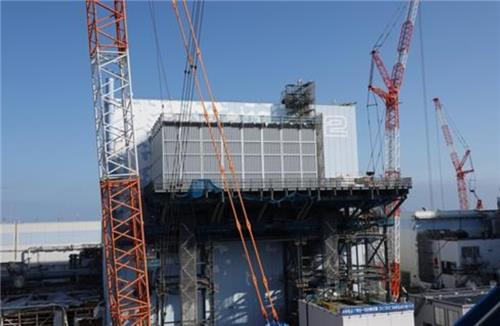Detected in the reactor containment cover… Concerns about disruption in decommissioning work
 viewer
viewer
When exposed near the 5th floor of the nuclear reactor building of Units 2 and 3 of Japan’s Fukushima Daiichi Nuclear Power Plant, where the decommissioning is being promoted, radiation is strong enough to cause death within an hour. For this reason, as part of the decommissioning work in earnest, there are concerns about a disruption in the removal of nuclear fuel debris (Debris) from the reactor of Unit 2, which is scheduled to begin next year.
On the 26th, a review committee under the Japan Atomic Energy Regulatory Commission released a draft interim report of the investigation resumed in September 2019 in relation to the Fukushima nuclear power plant accident that occurred during the March 2011 Great East Japan Earthquake. According to this draft, it was found that there is a facility with very high radiation levels near the 5th floor of the nuclear reactor building of Units 2 and 3 of the Fukushima No. 1 nuclear power plant.
Contaminated with high-concentration radioactive materials is a circular reinforced concrete facility with a diameter of 12 m and a thickness of about 60 cm that acts as a cover right above the reactor containment vessel. As a result of measuring the amount of cesium, a radioactive material in the inner part of this cover consisting of three layers, Unit 2 was about 2 to 4 ca. It is estimated that Unit 3 will reach Becquerel at around 3rd. When converted into radiation dose, the Mainichi Newspaper reported that it is about 10 sieverts per hour (㏜, unit of radiation dose to human body), and that a person can die within an hour if exposed to this environment.
The review committee analyzed that the reason why a large amount of cesium was attached to the inside of the cover was the result of the cover functioning to prevent the leakage of radioactive materials to the outdoors immediately after the explosion. In fact, it was estimated that about 160 trillion becquerels of cesium were attached to Unit 1, whose cover was modified by hydrogen explosion, less than units 2 and 3.
Becquerel is an indicator of the radiation intensity emitted by the collapse of an atomic nucleus, and Sievert is an indicator of the effect of radioactive substances on the human body. In accordance with international standards, the dose limit for radiation workers prescribed by Japanese laws and regulations is 20 millisieverts per year (m㏜, based on 5 consecutive years of work) on a whole-body basis. Since 1 sievert is 1,000m㏜, it is possible to estimate how fatal the 10 sievert exposure is to the human body.
 viewer
viewer
Tokyo Electric Power, which operates the Fukushima nuclear power plant, plans to start taking out the melted debris from the reactor of Unit 2 next year. It is known that it is necessary to remove the cover in some cases for this work, which will be the first gateway to the full-scale decommissioning. In this regard, the Yomiuri Shimbun predicted that a total of 465 tons of cover weight and high radiation dose of cesium attached to the cover will be a challenge to be solved during the lung pulmonary process.
On March 11, 2011, the tsunami caused by a scale 9.0 earthquake that struck the East Japan region struck Fukushima Daiichi Nuclear Power Plant, which is located halfway in two villages, including Futaba and Okuma on the Pacific coast of Fukushima Prefecture. At that time, of the six reactors of the 1st nuclear power plant, the cooling system was shut down due to flooding of units 1 to 4 on the Okuma village side. The Fukushima nuclear power plant accident was caused by this effect, causing the core melting of Units 1 to 3 to leak large amounts of radioactive materials into the atmosphere and the ocean. This accident was at the highest level (7) as the former Soviet Chernobyl nuclear accident in 1986, based on the International Nuclear Accident Class (INES).
According to the Yomiuri Shimbun, the Japan Atomic Energy Regulatory Commission reviewed the’vent’ process in which vapor containing radioactive materials was released into the atmosphere to prevent damage to the containment container, and the vapor from Units 1 and 3 returned to the reactor building. Revealed the facts. Also, through CCTV video analysis, it was confirmed that the explosion occurred several times in Unit 3. The Japanese Atomic Energy Regulatory Commission is scheduled to release its final report in March, the 10th anniversary of the accident.
/ Reporter Park Ye-na [email protected]
< 저작권자 ⓒ 서울경제, 무단 전재 및 재배포 금지 >
